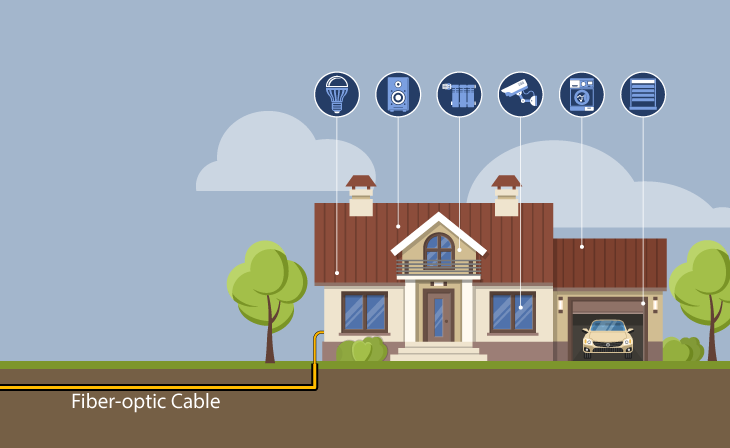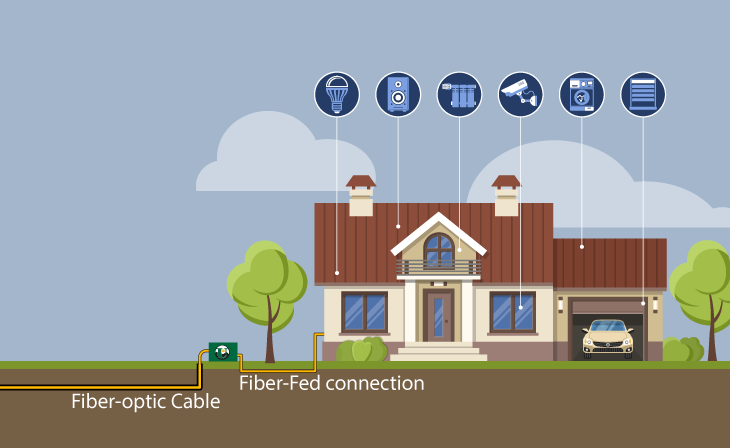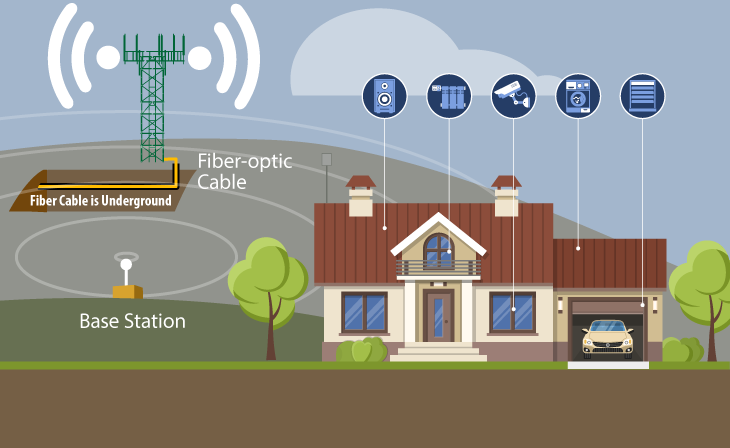How it all works
The backbone of Union’s high-speed internet service is our fiber transport network. To date, we’ve buried over 1,000 miles of fiber in the ground. Safe from the elements, this network carries data from the greater internet to the areas we serve.
To deliver service from our transport fiber, we use three different types of technology, fiber-optic, fiber-fed DSL, and fixed wireless.
Internet delivery systems

Fiber-Optic
Fiber to the Premises (FTTP), in which fiber is run directly to a residence, is the gold standard in internet technology. It’s fast, extremely reliable, and offers more bandwidth than most users will ever be able to max out. Speeds up to a gigabit, or 1,000 Mbps, are available.
Bringing fiber to a community is a massive undertaking, very much like creating the infrastructure for other utilities like water or electricity. FTTP requires coordination with local governments and extensive construction. It’s cost-prohibitive in many remote areas and is only available in certain markets.

Fiber-Fed
In markets where Union landline infrastructure exists, we tap into our fiber network using copper phone lines. In the early days of the internet, DSL gained a bad reputation as being unreliable, but technology has evolved. We use higher-grade equipment (really!) to provide reliable service and speeds of up to 100 Mbps.
While it is DSL, it’s fiber-fed right up to the last few miles. That better hardware to carry data to the customer along with significant advances in router and modem technology make for a positive user experience.

Fixed Wireless
One of the secrets to our superior fixed wireless service is fiber. We’ve taken the time to run fiber to almost all of our network of over 300 cell towers. From a tow/Content/Images/uploaded/FixedWireless.pnger, we send internet data a very short distance, known as the last mile, to a base station in the customers’ community and then on to transceivers mounted on residents’ homes. Speeds for this service are currently set at 25 Mbps.

